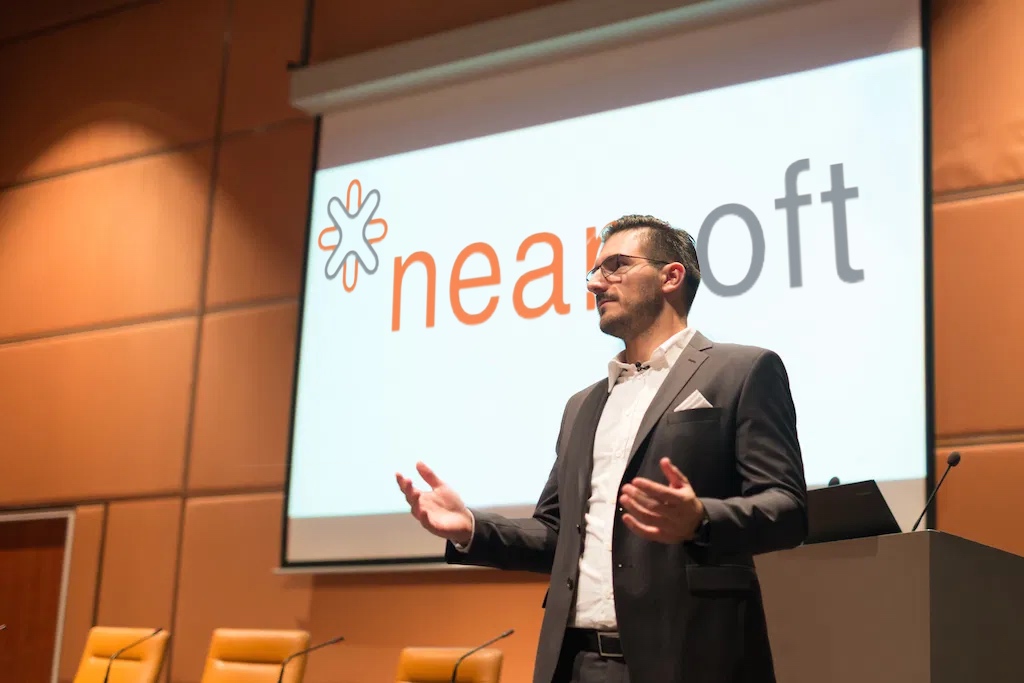
Elon Musk the alien
On the night of August 28-29, Elon Musk unveiled a new version of the Neuralink device, which is designed to cure people of a host of brain and spinal problems. The device is designed not only to treat autism or Parkinson’s disease, but also to allow us to transmit thoughts directly
to each other and, most importantly, fuse with AI, thereby making our minds even more
more powerful, so that in the future the world will be ruled by, in Ilon’s words, the common will of humanity.
But how close to the truth is this?
Last year, Musk presented a much larger device that consisted of 3,072 electrodes on 96 strands connected to a chip. The chip had a micro-USB input that sent data to a computer. The new version of the Neuralink product is labeled 0.9, which means that a working product release is very close, which has three times fewer electrodes, looks like a coin, and is not attached behind the ear, which would
which wouldn’t be very presentable, but in a person’s skull. And, as the presentation showed, the data from the brain, which the company’s engineers call bursts, are read perfectly even after
two months of use and increased activity on the test pig.
“Over the past year, we’ve simplified our systems significantly: they now fit into a chip that takes up less space than a coin, and it can be completely hidden when implanted. It will completely merge with the skull bone and will be invisible from the outside, working all day without recharging,” says Ilon himself.
The device was tested on two pigs. The chips installed allow scientists to monitor the activity of the touch centers of the animal’s brain wirelessly, tracking what the pig touches with its heel. Pigs were chosen for the simple reason that a pig’s skull is similar in anatomy and thickness to a human’s.
To demonstrate the safety of these devices, neurophysiologists removed the implant from the brain of one of the individuals without damaging its brain. As Musk noted, the other chip has been working in the head of the second animal for several months without causing rejection or other problems.
Neuralink experts will try to restore the paralytic’s
the ability to move independently and communicate with others. Here’s how Ilon puts it:
“If a person has faced a serious spinal cord injury to the point where they have difficulty controlling even their facial muscles, the implant will help them type, control their computer and phone with their thoughts. That’s pretty cool. And importantly, in the long run it will be possible to read what the person would like to do with their limbs…I’m convinced that in the future it will be possible to regain the ability to move, people will be able to walk again, use their hands…”
“Truly, arise and walk,” as the Bible says.
All this looks inspiring and revolutionary, but some neuroscience experts are still skeptical about Neuralink’s plans.
As Sergey Shishkin, head of the neurocognitive interfaces group at the MEG Center of the Moscow State Humanitarian Pedagogical University, says: “Such developments and research may well be useful, it seems to me, for creating technologies that can help seriously ill people. However, both Musk’s company and his competitors will have a long way to go before these technologies will cease to be purely experimental.
Sergey Shishkin reflects that one of Musk’s main competitors in the field of neuro-interfaces, Brian Johnson, has just recently dramatically changed course and essentially stopped competing with him. His startup Kernel, in which Johnson managed to invest his own $100 million, suddenly switched from developing invasive (implantable) neural interfaces to non-invasive ones that do not require surgery or putting anything artificial into the brain at all. This seems to be due to the fact that the main goals of this company are not in the field of
medicine. Johnson reportedly wants to use neurointerfaces primarily to improve the brain functions of a healthy person. Apparently, he has decided that there is still a long way to go before invasive technology is completely safe.
“But Musk is also primarily inspired by the very idea of enhancing human brain function by connecting artificial intelligence to it. And I suspect that Neuralink’s current pace is insufficient to realize this dream. Not to mention the fact that there is no – at least to date – scientific data
proving that it is possible to significantly enhance brain function by expanding the brain-machine interaction channel. It is not known how great the adaptive capabilities of the brain are that could allow the use of an over-expanded new channel of communication. And it is particularly unclear whether the brain would be able to cope with the inevitable numerous errors that would arise in such an extended
channel.
The brain is too complex and as yet little understood compared to the laws of physics, the knowledge of which is needed to build rockets and electric cars. I suspect that Musk underestimates this too much, and Neuralink may be, alas, the least successful of his projects,” the specialist believes.
But isn’t this a reference to Rogozin’s trampoline?
Neuralink was created by Ilon Musk only four years ago, and announced successful tests on pigs on August 29th. Too long for success? Not really, because the field in which the company operates is just beginning to be explored. It’s hard to even call it nascent, and Elon and his team have made their first laboratory successes, included in the FDA’s authoritative breakthrough medical technology program, have created a work-surgeon,
who inserted strands of implant into the brain with super-precision, so as not to hit a single vessel in the constantly pulsating brain in a fully automatic mode. What’s to come?
“The reality is that over the course of our lives, almost all of us encounter brain and spinal problems. These problems vary in severity, but if you live long enough, sooner or later you will encounter one neurological condition or another, from memory loss to brain damage,” says Ilon.
But all of that can be avoided with the Neuralink implant. And that’s just one of the small benefits of this device.
“It can save us from unnecessary pain and suffering,” as Matthew McDougal, the company’s chief neurosurgeon, puts it. And also give us a future without disease, a future where we can know about something before it happens and avoid it, thus preventing disease.
In the future it will be possible to save and revise memories. They could potentially be downloaded into a new body or robot. The Ilon team also believes that their device will be able to help unlock the mystery of consciousness. For scientists will be able to observe other people’s neural correlates, will be able to experience corresponding states, i.e.
that is, “get inside someone else’s head.”
“The future will be strange,” Musk says.
And very impressive. Neuralink is already making the impossible possible by the very fact of developing such a product, which will overturn the entire way humans interact, think and exist. Perhaps if this project becomes a working product like Tesla, Elon Musk will join the cohort of the greatest men in history in his lifetime and give us a world that even the bravest among us have feared to dream of.
Author of the article: Rasul Abu Hanifa.
Sources: Nauka.tass.ru, Neuronovosti.ru and Russian-language YouTube channel “Ilon Musk”.












